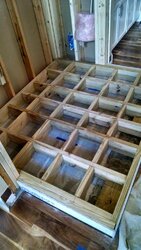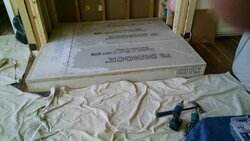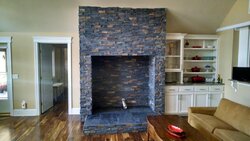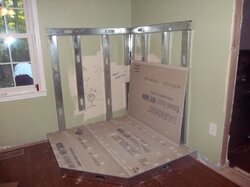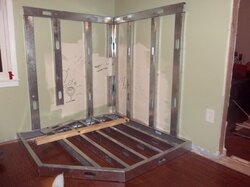Hi everyone!
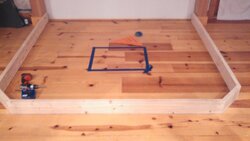
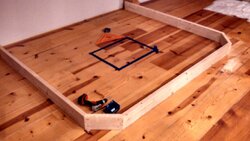
I am a newbie, and am trying to build a raised hearth pad to place a us stove pedestal king model 2007b wood stove on.
I am somewhat confused on the K to r value thing...but with research I converted the following:
manual says to have a thermal conductivity of K=0.45 BTU in/ft. 2 hr deg F. with 28 gauge sheet metal or a UL listed floor protector..... So I read on the internet and found calculations...if I did it right the r value is 2.22...does that sound right?
So if that is right I need a hearth that is gonna be hard to build! I have read that you can use the air space under a raised hearth as an r value. One website says ventilated air space of 1" has an r value of 1.43.
Attached is 2 pics of what I have done so far...details are as follows...have wood floor..used 2x8 wood studs to make the frame for the hearth....the blue tape is the outline of the stove where it will sit on the hearth.
Any suggestions...help...?


I am a newbie, and am trying to build a raised hearth pad to place a us stove pedestal king model 2007b wood stove on.
I am somewhat confused on the K to r value thing...but with research I converted the following:
manual says to have a thermal conductivity of K=0.45 BTU in/ft. 2 hr deg F. with 28 gauge sheet metal or a UL listed floor protector..... So I read on the internet and found calculations...if I did it right the r value is 2.22...does that sound right?
So if that is right I need a hearth that is gonna be hard to build! I have read that you can use the air space under a raised hearth as an r value. One website says ventilated air space of 1" has an r value of 1.43.
Attached is 2 pics of what I have done so far...details are as follows...have wood floor..used 2x8 wood studs to make the frame for the hearth....the blue tape is the outline of the stove where it will sit on the hearth.
Any suggestions...help...?


